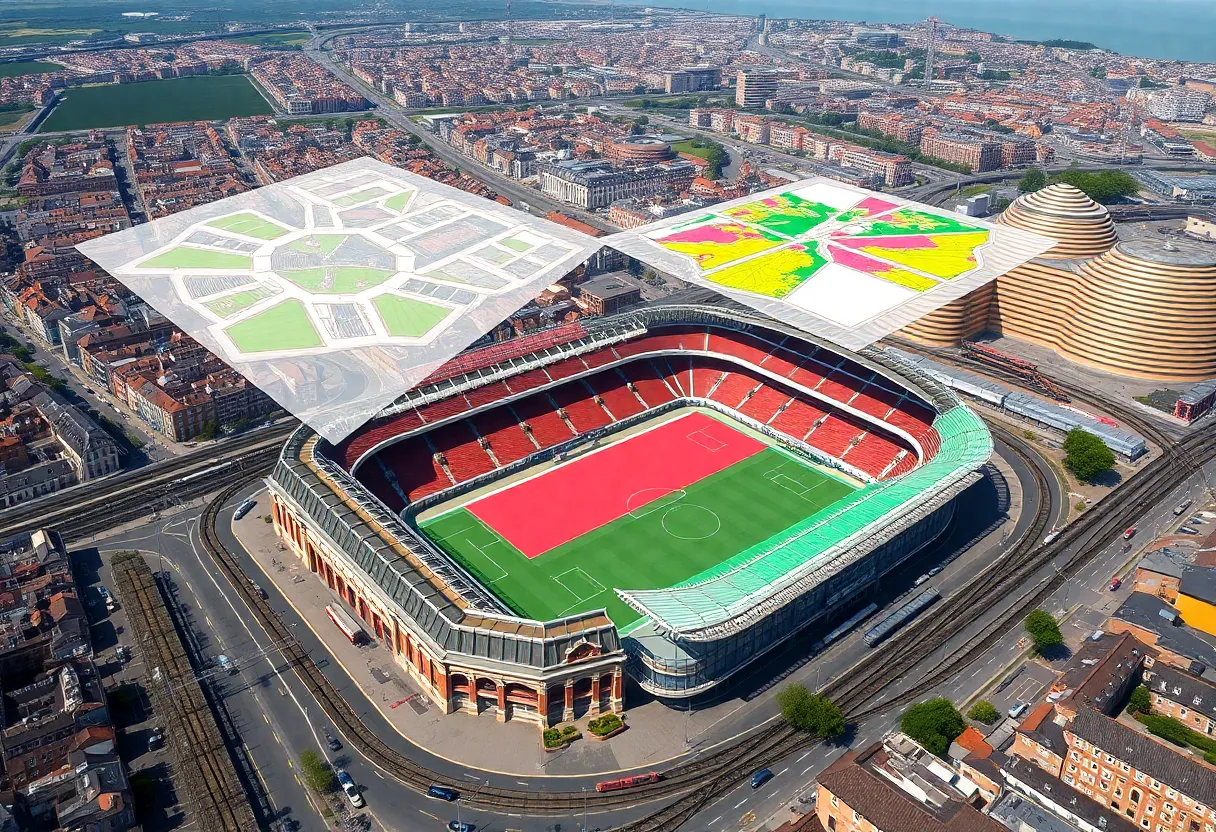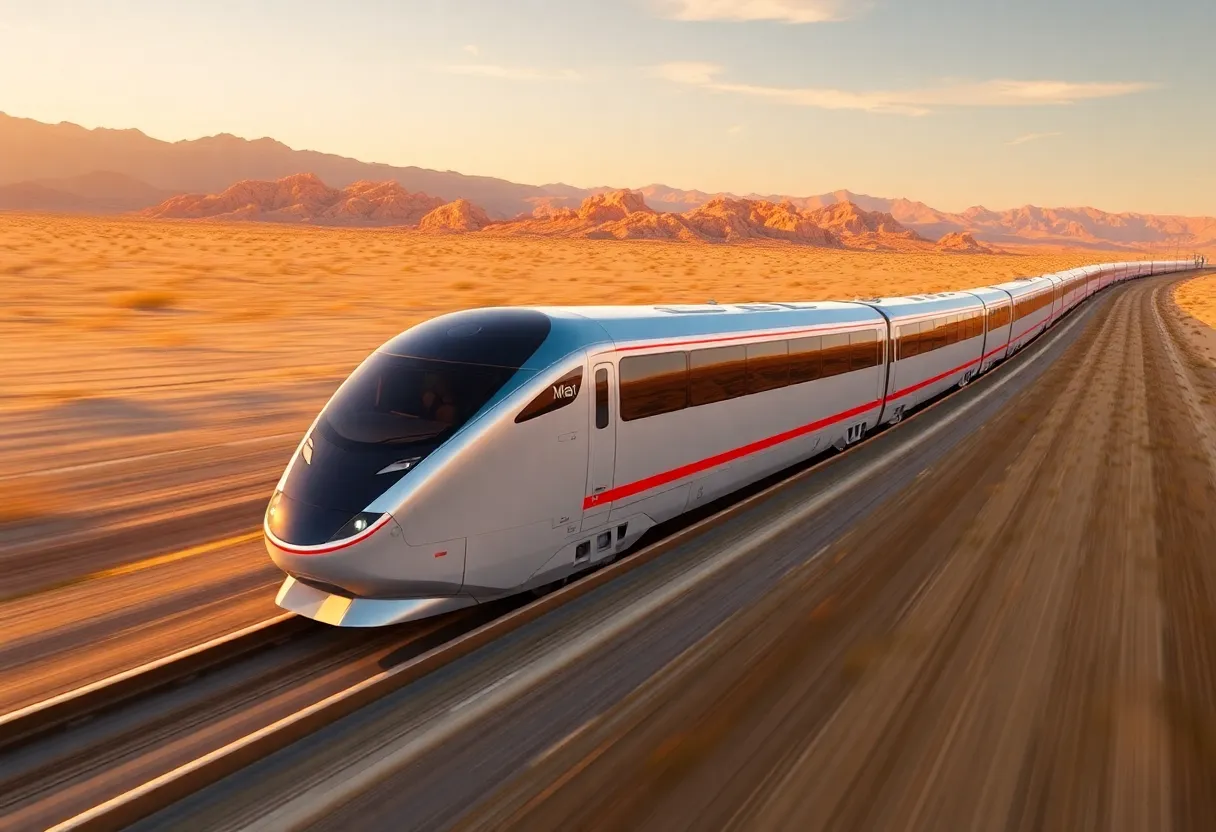Wrexham, Wales, August 20, 2025
News Summary
An engineering and architecture team led by Ramboll has been hired to design a new 5,500‑seat Kop stand at the Racecourse Ground. The project combines geographic information system (GIS) mapping with 3D building information modeling (BIM) to create a shared digital environment that fits the stand into a constrained neighborhood site adjacent to active rail lines. Integrated GIS‑BIM workflows enable clash detection, drainage and traffic planning, and sustainability features like solar panels and stormwater management. The stadium upgrade is tied to wider town regeneration plans, including transport improvements and non‑match‑day amenities to boost local economy and tourism.
Ramboll uses GIS and BIM to design a new 5,500-capacity Kop stand as Wrexham’s stadium and city plans move forward
Summary
The next major upgrade at the historic Racecourse Ground will be a new 5,500‑capacity Kop stand, designed to fit tightly into an existing neighborhood and active transport corridors. Engineering and design firm Ramboll led a digitally driven design process that fused geographic information systems (GIS) with building information modeling (BIM). That integrated approach was chosen to reduce risk, protect community support, and help align stadium work with wider plans for transport, tourism, and city centre regeneration.
Key project drivers and context
The Racecourse Ground, known as the oldest international stadium still in use, was in need of repair when new owners acquired the club in 2020–21. Modernizing the venue became a top priority and was documented in a televised docuseries that helped raise the club’s profile. Owners supplied new financial backing and marketing reach, contributing to rapid progress on and off the pitch, including promotions that took the team from the fifth tier to the EFL Championship and historic back‑to‑back‑to‑back promotions completed in April 2025.
Why digital integration mattered
The stadium sits inside a built neighborhood and next to live rail lines, so any design error could strain local support — a crucial element for the project’s long‑term viability. Ramboll avoided siloed working by merging the mapping strengths of GIS with the detailed 3D building information that BIM provides. The result was a single, shared digital environment where teams could see how new structures, drainage, paths, utilities, and traffic arrangements fit together before a single foundation was poured.
How GIS and BIM were used together
Project teams combined GIS-powered maps and 3D BIM models to build dynamic visualizations of the stadium, surrounding area, and planned upgrades. Environmental data flowed into model geometry to show real site conditions, from ground levels and drainage routes to nearby rail clearances. This data exchange turned models into a living source of truth, enabling environmental staff to collect field information and link it directly to design tools used by architects and engineers.
Benefits on the ground
With maps and models linked, design clashes were spotted early and avoided. Teams were able to refine drainage plans, account for traffic flows on match days, and test sustainability add-ons such as potential solar arrays and stormwater management systems. The integrated workflow moved the project from reactive problem solving to proactive risk mitigation, lowering the chance of expensive changes during construction and protecting neighborhood ties that the project depends on.
Broader planning and community aims
Ramboll’s UK and Ireland digital hub manager reported that stadium work is part of a wider plan linking transport improvements, city centre regeneration, and new non‑match‑day amenities. Those amenities include a proposed hotel, retail units, and office space aimed at boosting local jobs and making the area more welcoming to visitors. Local tourism leaders and small business owners have already reported higher visitor numbers since the club’s revival, and town leaders are investing in visitor services to capture that momentum.
Sporting momentum and squad planning
Owners brought money and marketing skill that helped grow a global fan base and the club’s fortunes. On the playing side, the team is already preparing for the 2025/26 Championship season. Some experienced players have left and others may be cleared to move on as the manager looks to refresh the squad. The club has shown interest in adding a midfielder and has been linked to several free agent options. One notable target on the free market is a 26‑year‑old midfielder who came through a top academy and later played a key role in promotion and Premier League seasons at another club; that player has had recent injury problems and would require time to get fully fit but would offer proven goals, skill, and defensive work if signed.
Community impact and next steps
Stadium upgrades are expected to expand the venue’s appeal for concerts and international matches, further supporting local hospitality and retail. The project team is continuing design work while engaging with local stakeholders to ensure that the new Kop stand and related regeneration work respect the town’s history and fit existing streets, services, and transport links. The integrated GIS‑BIM method will remain central as designs are refined and moved toward construction.
Frequently Asked Questions
What will the new Kop stand hold?
The planned Kop stand will have a capacity of about 5,500 spectators and is designed to sit within the existing neighborhood footprint.
Why combine GIS and BIM for this project?
Combining GIS and BIM allows teams to see true site conditions on top of building models. That makes it easier to spot clashes between utilities, foundations, drainage, and nearby rail infrastructure, reducing surprises during construction.
How does the design approach protect the community?
The integrated workflow helps avoid design mistakes that could create traffic, noise, or drainage problems. Early coordination also keeps neighbors informed and preserves local support that the project needs to succeed.
Will the stadium upgrades include other facilities?
Yes. Broader planning looks at transport, a neighbourhood hotel, retail, office space, and other amenities intended to drive year‑round activity beyond match days.
Is the club changing its squad as it moves up leagues?
After promotion, the manager is expected to adjust the squad. Some players have already left and the club is exploring free agents and midfield options to boost Championship‑level depth.
When will construction begin?
Design work is ongoing and will be followed by planning approvals and tendering. Integrated digital models are being used now to reduce delays once work starts.
Key features at a glance
| Feature | Detail |
|---|---|
| New stand capacity | 5,500 seats |
| Primary design tools | GIS + BIM integrated workflow |
| Site constraints | Built neighborhood, adjacent active rail lines, limited space |
| Community aims | Protect local support, boost tourism, add non‑match amenities |
| Sustainability measures | Solar potential, stormwater management, improved drainage |
| Project lead | Ramboll with UK & Ireland digital hub oversight |
| Sporting context | Club moved to the Championship; rapid promotions through investment and marketing |
Deeper Dive: News & Info About This Topic
Additional Resources
- Forbes: Wrexham — How one stadium project eliminated the construction inefficiency problem
- Wikipedia: Racecourse Ground
- NBC Los Angeles: Wrexham AFC — the club’s incredible journey
- Google Scholar: Wrexham regeneration
- The Wrexham Insider: Opinion — Ryan Reynolds and Rob McElhenney could revive the career of Premier League ace at Wrexham
- Google Search: Ryan Reynolds Wrexham
- Christian Science Monitor: Can a soccer team revive hope in a Welsh city? Welcome to Wrexham
- Encyclopedia Britannica: Wrexham
- New York Times: Wrexham AFC — Reynolds, McElhenney and a Welsh city’s revival
- Google News: Wrexham AFC
Author: Construction CA News
The CALIFORNIA STAFF WRITER represents the experienced team at constructioncanews.com, your go-to source for actionable local news and information in California and beyond. Specializing in "news you can use," we cover essential topics like product reviews for personal and business needs, local business directories, politics, real estate trends, neighborhood insights, and state news affecting the area—with deep expertise drawn from years of dedicated reporting and strong community input, including local press releases and business updates. We deliver top reporting on high-value events such as the Rose Parade, Coachella, Comic-Con, and the California State Fair. Our coverage extends to key organizations like the California Building Industry Association and Associated General Contractors of California, plus leading businesses in technology and entertainment that power the local economy such as Apple and Alphabet. As part of the broader network, including constructionnynews.com, constructiontxnews.com, and constructionflnews.com, we provide comprehensive, credible insights into the dynamic landscape across multiple states.




